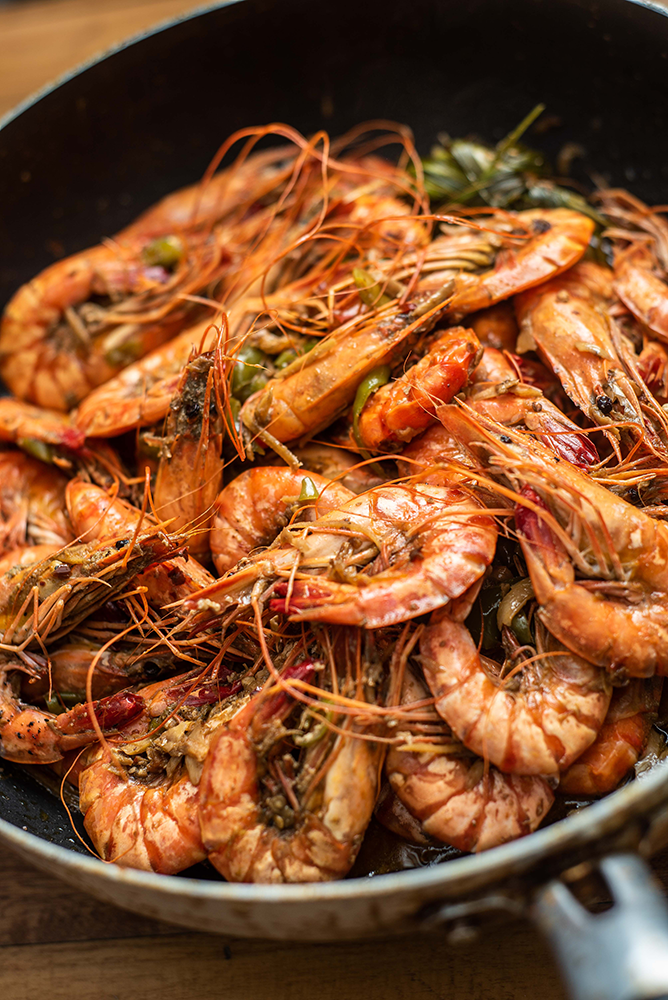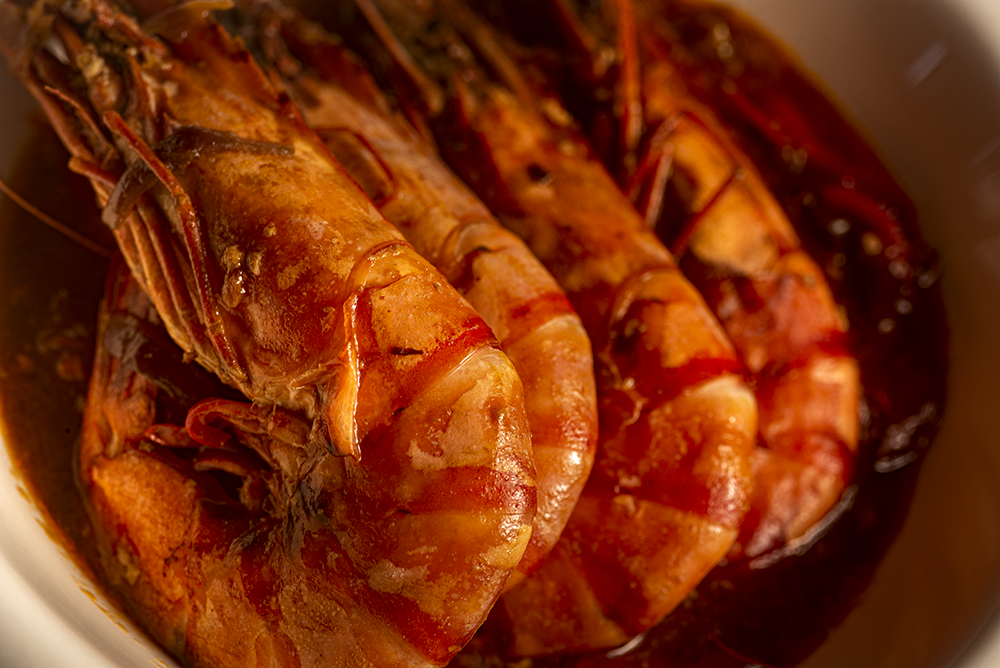Just before you cook this, make sure you are in good health. Take note that you get 122 mg to 251 mg of cholesterol level per 100 g of servings of shrimp. That’s a lot as the allowable daily dosage of cholesterol in our body is around 200 mg per day only. Going beyond this would result in the eventual clogging of your arteries. I am sure you don’t want to die where the cause is katakawan.
This is the simple Math:
1 kilo of Shrimp = 1022 mg of cholesterol
200 mg of cholesterol= maximum level allowed to consume per day
Note: The ingredients that are presented here are those which are endemic in my hometown or readily available in the Bacolor and San Fernando Wet Market.
Theory:
It is ideal to use shrimps that have a normal temperature fresh from the consignacion or wet market in cooking this dish. If you are buying from the supermarket (susyal) and got them frozen, don’t use them immediately and you need to defrost them until they achieve the desired temperature ideal for this cooking.
Why is this important? When seasoning the shrimp with a basic compound like salt under normal temperature, cell walls of the shrimp’s protein can allow the two ions (sodium and chloride) to enter and navigate even to the center of the shrimp freely which would make the shrimp tasty and savory. Tanggap yang lasa, ada keng Kapampangan. Once you cook a shrimp while it’s still between O degree F to 10 degrees F, the frozen water inside the shrimp will just go down the hill and lose the taste. On the other hand, the sodium chloride will intensify and sips through the cells of the shrimp as it gets hotter since its water content can mix well with the compound when the temperature increases.
What’s the best method? Never put salt onto the shrimps while they are still frozen. It would make the temperature drop and make them colder. Remember the ice cream sherbet barrel full of ice and put with a lot of salt? This is to maintain the ice frozen. So don’t put salt while your shrimp is frozen.
The initial process is to brine the shrimps by pouring salt on them, shake them in a container and after several minutes, disgorge them by either putting them under running water or wipe them clean with a dry cloth.

The process: The recipe includes two methods: one is sauteing the shrimp and afterward, applying a big flame when immersed with the liquid sauce. This is just a very simple process. You only need to pay attention to how the ingredients can be absorbed by the shrimp or trapped in between the prawn meat and shell of the shrimp.
Just before you start cooking, you need to cut all necessary ingredients ready to be poured into the pot or pan. The shapes and sizes should be according to your preference as there are no absolute sizes and shapes to prepare this dish.
Ingredients: Saute Part (Isangle) (Pan)
Paro (lunu , sugpu or swahi)
Bawang
Laya
Sibuyas
Larang Pamaksi
Larang Maparas
Bulung Sibuyas
Pamintang Durug
Taba ( Malyaring Star Margarine pero anaka ka kapamurayit kanita kasi malasa ya ing margarine)
Ingredients: Boiling Part ( Masikan a Tangab ) of the sauce (Pot)
Tomato Sauce
Tomato Paste or Ketsup
Aslam or extracted lemon juice from a lemon fruit
Patis (ditak mu)
Toyu (ditak mu)
Asukal ( isalbag me ing kasakmal a gamat)
Sta Anis (nung atin ka)
Bulung sibuyas ampo laya (daldakan mung parewu ini na makagawang kang balamu cream)
Add water if you are including this ingredients below to have more time to soften them through slow boil:
Mais (agyang alayu, malyari ya. detang sweet corn would be ideal)
Patatas ( agyang alayu, malyari ya. detang malati would be ideal)
The process: When you think of the sauteing process, think of it as a method of absorption. In the pan, the first thing is to saute the bawang and laya until they turn golden brown. Then, put the cut pieces of larang pamaksi , and let it get mixed thoroughly with bawang and laya. Now, put the prawn into the mixture and continuously mix them with the sautéed ingredients, This should be non-stop. Now put the sibuyas and mengagiling bulung sibuyas into the mixture. Take note that this process should not make the prawn shrink in size but only to make these ingredients get to the prawn’s meat inside. Once everything is thoroughly mixed, put off the flame.
Now, in the pot, mix all the ingredients stated above. Before that, you need to grind and pound the laya and bulung sibuyas until they extract their juice and mix well.
This along with the other ingredients stated should be combined and stirred together until the liquid turns totally red. The one kilo of shrimp should have around half a liter of this sauce. Also, if you are including mais and patatas, you need to add water good enough to boil the sauce until these become tender.
Boil this sauce mixture for around 15 minutes in a close lid and big flame while stirring it every now and then to avoid burning it. Once it reaches the boiling point, pour the shrimps from the pan alongside all the things included in the sauteing and close the lid of the pot. Watch it close as it cools down a bit and starts to reach the boiling point.
While it boils in a big flame, open the lid and start mixing everything all together. What determines if the dish is done when you can no longer see the ingredients in solid form and liquid evaporates. TASTE AS YOU GO. If you think you did it well, turn off the heat.
Enjoy.





